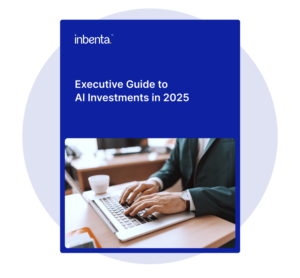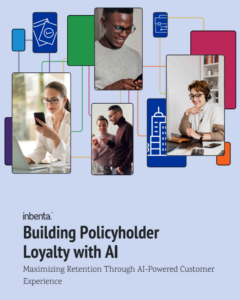Customer experience has become a key brand differentiator in a growingly competitive business landscape. As a result of this, there has been an increasing call for enterprises to optimize their customer service. Today, companies must ensure that their customer service caters to growing demands for personalized, 24/7, multilanguage experiences that can be carried out across several channels.
Additionally, Covid-19 has further altered consumer habits. During lockdowns, workers have been unable to access their workplaces and many services have been disrupted or forced to accelerate their digital transformation strategies to keep up with market demands.
Organizations are choosing to use innovative technologies like Artificial Intelligence (AI) to automate their customer services to complete, improve and personalize end-to-end customer interactions and deliver the best possible customer experience.
What is customer service automation and what benefits does it provide?
A study from Forrester shows that 66% of customers believe that the most important thing a company can do is value their time.
Customer service automation is a built-in process that aims to streamline customer service and curb the need for human involvement in resolving customer requests as swiftly and efficiently as possible.
Enterprises want to automate their customer service teams by using tools that automatically complete tasks. These tools and technologies can include AI, Robotic Process Automation, Machine Learning (ML) and Natural Language Processing (NLP).
Solutions like advanced chatbots, knowledge management systems and AI can deliver scalable, 24/7 customer service in multiple languages. They can resolve FAQs and complicated and contextual questions while leveraging the actionable insights from data they accumulate to provide personalized experiences for customers and provide feedback and assistance to human agents.
The benefits are palpable. From streamlined processes to smoother customer and agent experiences, ultimately, they save time, money, and resources by delivering high-quality answers. This boosts customer satisfaction rates as well as brand loyalty. Automating customer service also helps human agents improve their workflow and focus on more complex tasks.
Customer service automation trends
Customer service automation looks to resolve customer requests quickly and effectively. There are several ways that businesses are looking to do this, from optimizing their customer self-service portals and knowledge management systems to deploying live chat and chatbots using AI and ML.
In addition, new customer experience trends that have accelerated the need for customer service automation. These are: remote customer service, AI-enhanced customer interactions, omnichannel and seamless customer communication, hyper-personalization, and an increased focus on data security and privacy. However, while companies now know of the importance of automating customer service, they are not exempt from facing challenges when choosing the right tools and technologies.
With customers, employees and businesses adapting to remote working, companies have had to adapt to a new landscape where customer service can be carried out away from call-centers. This means implementing the right technologies that allow remote collaboration and data sharing that can still guarantee quality customer experience.
Businesses have learned the importance of self-service tools. Customers don’t like waiting, and a report by American Express shows that over 60% of Americans say that “their go-to channel for simple inquiries is a digital self-serve tool.”
From a company’s perspective, nearly 75% of IT decision-makers said that intelligent self-service automation ensured their organization was able to remain agile throughout Covid-19 and 64% of these decision-makers expect to increase investment in automation technology.
Providing an optimal self-service tool with automated customer service has its opportunities and challenges.
Overcoming the challenges in Customer Service Automation
With up to 60% of customers failing to make their intended purchase because of poor customer service, care must be taken to ensure that customer service automation is carried out efficiently.
Customers are increasingly turning to self-service, but these services must also adapt to their preferences. Consumers want to be able to access their customer service from their preferred devices and channels, at any time of day and in the language of their choice. However, they also appreciate the possibility of finding help form a human agent if they need to.
Automated customer service can limit human-to-human interactions when they are inefficient or unnecessary, but it should not restrict these interactions completely.
Instead, businesses should use tools that automate processes such as billing, purchasing and product inquiries, but must still rely on human agents for tasks that require negotiations or human understanding, even if these may not be available 24/7.
Businesses must now strike a balance so that their customer service automation uses technologies that provide the omnichannel, multilanguage and 24/7 capabilities customers want while also making it easier for human agents to resolve more complex queries and build relationships with clients.
Automated services may lack the personal touch provided by humans, so it is important to personalize customer experiences by making the most of actionable data insights to create tailored replies and recommendations based on past interactions.
Also, care must be taken to ensure the maintenance of automated services. Just because a service is automated, it still needs to be monitored and enhanced over time to get the maximum value from your solution and maintain high customer satisfaction.
Finally, businesses must be able prepared to deliver their services on several channels. Importantly, customers expect customer service to be equally responsive in all these channels. Therefore, businesses must deploy seamless, omnichannel strategies when managing their automated customer service. This seamlessness must also be deployed if issues are escalated from a bot to a human agent.










